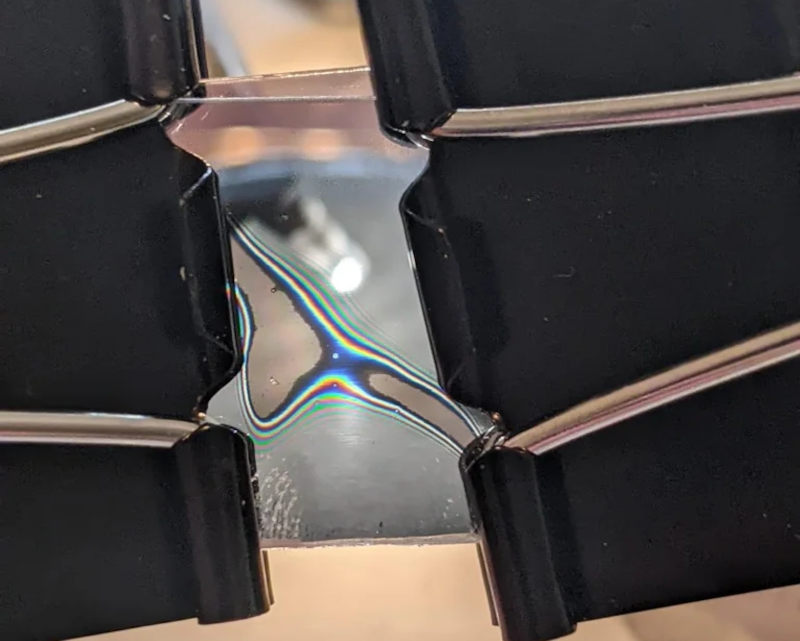If someone asked you to measure a change in distance at about one ten thousandths of the diameter of a proton, you’d probably assume you would need access a high-tech lab. The job is certainly too tight for your cheap Harbor Freight calipers. [Opticsfan], though, has a way to help. You might not be able to get quite that close, but the techniques will allow you to measure a surprisingly small distance.
The technique requires a Fabry Perot cavity, an inexpensive spectrometer, and an online calculator to interpret the data. This type of cavity is two parallel mirrors facing each other with a slight gap between them. Light can only pass through the cavity when it is in resonance with the cavity. These have been around since 1899, so they aren’t that exotic. In fact, they are often used in laser communication systems, according to the post.
Using partially reflective mirrors, the device causes interference fringes. The project requires two half-silvered mirrors, a white light source, some binder clips, and some helping hands. Oh, you also need a spectrometer.
The Spectryx Blue spectrometer mentioned in the post isn’t as expensive as a professional instrument, but it still isn’t a throwaway purchase. We wonder if you could use a homebrew spectrometer and get similar results. Light down at these scales is a strange and wonderful thing.

















I reads as if you are equating nanometer scales with “one ten thousandths of the diameter of a proton”. It should be said that atom-scales are a tenth of a nanometer and with protons at femtometers we are talking attometers for that fraction of a proton.
Came here looking for this correction, thanks!
The “one ten thousandth the width of a proton” comes from LIGO and is referenced in the link as to exactly how insane FP cavity interferometers get, hence the confusion in the article: so you absolutely *do* need a lab to do that. That being said, a lot of the difficulty getting below nanometer scale isn’t in the apparatus, it’s in generating an actual gap that’s stable to less than that distance.
I’m disappointed. It only measures the distance between the reflective surfaces of two partially reflective mirrors.
People who grind their own telescope mirrors at home have used sodium lamps (monochromatic light source), an optical flat and the Newton’s rings generated to measure at the manometer scale imperfections that they need to correct.
For other methods, search for “telescope building with John Dobson” 36:40 for ~1″ accuracy and 1:20:00 for ~0.0000005 inches (~12 nm) accuracy. Watching the full video of a master at work is very rewarding.
Manometer is officially my favorite typo of the week. I am also definitely going to have to watch that video because I am pretty curious what someone uses to correct a 12nm imperfection at home.
“correct a 12 nm imperfection” I think you stare at it irately for a few minutes.
Also: a manometer is a device that uses the difference in height of a fluid to measure pressure. You can even set one up with an interferometer (either a laser bouncing off the surface from above or ultrasound bouncing off from below), to get yourself manometers that measure nanometers.
If I may, I would like to clear up a misunderstanding.
Manometer: a term used by Tailors.
Refers to ones tape, when undertaking an inside leg measurement.
Chromii
The picture… I’ve seen it somewhere before. Could it be?… Yes, yes, it’s a flux capacitor!